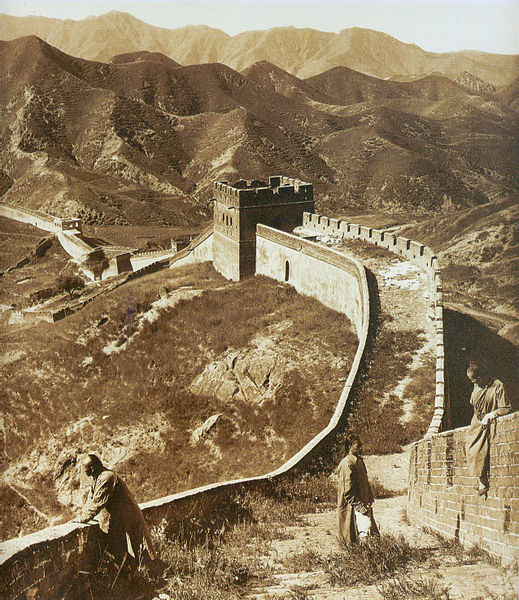The Ming Great Wall, built by the Ming dynasty (1368–1644), forms the most visible parts of the Great Wall of China today. A comprehensive archaeological survey, using advanced technologies, has concluded that the Ming walls measure 8,850 km (5,500 mi) from Jiayu Pass in the west to the sea in Shanhai Pass, then looping over to terminate in Manchuria at the Hushan Great Wall. This is made up of 6,259 km (3,889 mi) sections of actual wall, 359 km (223 mi) of trenches and 2,232 km (1,387 mi) of natural defensive barriers such as hills and rivers.
The Great Wall at Mutianyu. This and many other famous sections of the Great Wall were built during the Ming dynasty.
The Great Wall at Dajingmen, part of the Xuanfu stretch of the Great Wall. The gate structure is a Qing dynasty construction.
A section of the Great Wall on the Hanging Cliffs (懸壁長城) leading up to Jiayu Pass
The "Stairway to Heaven" stretch of the Simatai Great Wall runs through precipitous terrain. Reinforced after the raid of 1576 so as to "not let a single horse in" (匹馬不入), as noted by a Ming official.
The Great Wall of China is a series of fortifications that were built across the historical northern borders of ancient Chinese states and Imperial China as protection against various nomadic groups from the Eurasian Steppe. Several walls were built from as early as the 7th century BC, with selective stretches later joined by Qin Shi Huang (220–206 BC), the first emperor of China. Little of the Qin wall remains. Later on, many successive dynasties built and maintained multiple stretches of border walls. The best-known sections of the wall were built by the Ming dynasty (1368–1644).
The Ming dynasty Great Wall at Jinshanling
Part of the Great Wall of China (April 1853, X, p. 41)
The Great Wall in 1907
Great Wall of Han dynasty near Yumenguan








